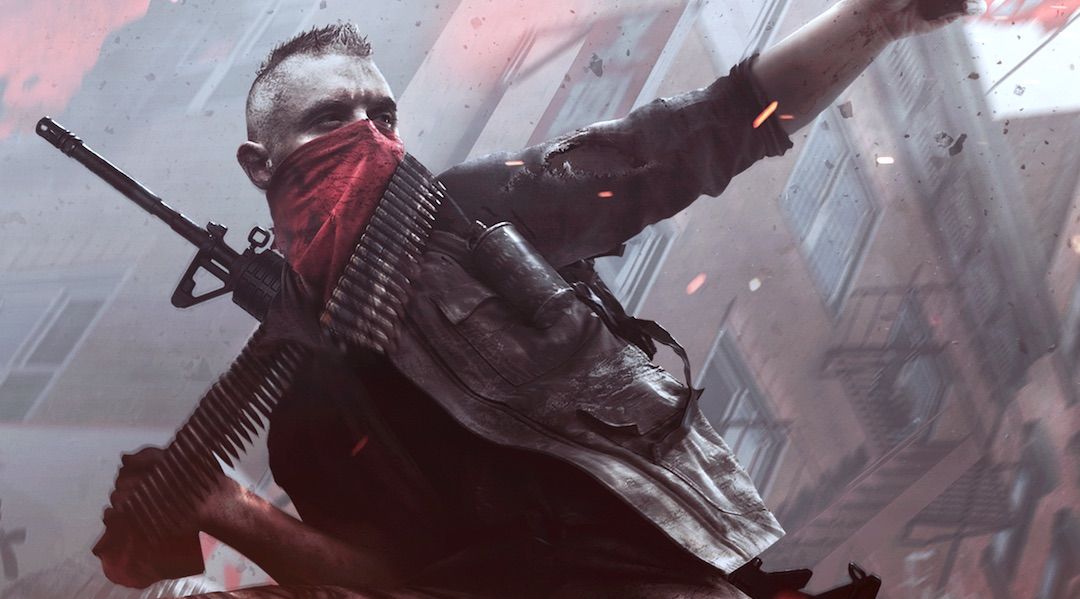Homefront: The Revolution is a mediocre FPS that squanders an intriguing concept, but worst of all the game is not fun to play and overwrought with repetition.
The original Homefront was a clever idea that never delivered in its execution, an alternate history first person shooter with very little substance. But, most would admit that there is something to the Homefront concept, enough to make it worth exploring again. Thus, Homefront: The Revolution was born.
Developed by a completely new studio and with a new publisher, Homefront: The Revolution is meant to honor the vision of the original game, while not drawing on any of its gameplay elements. Where the original game was a guided narrative, Homefront: The Revolution is a more open experience. Unfortunately, much like the first game, Homefront: The Revolution crumbles under its own weight, failing in different ways than its predecessor but still failing nonetheless.
Homefront: The Revolution’s story is built on a similar framework – the North Koreans have used our technology as a means to invade and now are occupying the US. Our government and our military have been assimilated into theirs, but there is a small resistance building from within. One faction, based out of Philadelphia, is on the brink of making real progress, and that’s where the player character, Ethan Brady, comes in.
Although Homefront: The Revolution tries to believably create a grassroots revolutionary movement, very few of its narrative elements are well thought out or communicated. It’s a story that merely exists to serve a series of objectives, which will see Brady traveling between sectioned-off open world zones. Each of these zones offers a handful of story missions and side objectives, but very few memorable moments. As the resistance tries to take back parts of Philadelphia, Ethan Brady will complete dozens of tasks, turning the map from red to blue, but most boil down to one of two categories. One requires that the player enter a specific area and kill any North Korean enemies. The other has him sneaking into an area and hitting a button on an object, occasionally with a simple puzzle thrown in.
That’s all to say that what Homefront: The Revolution offers cannot be a considered an engaging, let alone compelling, experience. In fact, some might even call it downright boring, and they would not be wrong. From the gunplay to the visuals to the story, what Homefront: The Revolution has brought to the table is a mediocre FPS propped up by an admittedly cool idea. There are the tiniest nuggets of a great game sprinkled throughout, but playing Homefront: The Revolution feels like a chore.
There are some cool ideas packed around the gunplay - like modding a weapon on the fly with scopes, muzzle brakes, and grips – but the actual shooting is very generic. Homefront offers a bevy of weapons to choose from, but most will get by just fine with the basic assault rifle and submachine gun loadout. The game never encourages experimentation with the weapons, and it struggles to offer challenge. The North Korean enemies rarely change their tactics, choosing to either peak out behind cover at regular intervals or stand in an open area and shoot.
And the major story missions fail to spice things up either, with many of them featuring either a large shootout or a basic stealth encounter as their foundation. It all adds up to a pretty mindless endeavor, one where it’s possible to run past entire enemy encounters simply to hit the objective button and complete a mission. With the right approach and a better design philosophy, the missions could have been, at the very least, casually distracting. Instead they are tedious.
Those who do want the option can replay some of Homefront’s missions in the cooperative Resistance mode, but again the experience feels like a chore. There is a cool character customization option complete with an upgrade path, but that’s all build-up to a disappointing online mode.
In an alternate history, Homefront: The Revolution makes up for the shortcomings of its predecessor, building on its Red Dawn inspirations to engaging effect. However, what Homefront: The Revolution actually is and what it aspires to be are never one in the same. The story has some interesting ideas, but the gameplay is reptitive and hardly worth the 15-hour investment. Homefront: The Revolution may be more substantial than its predecessor but it’s no better in terms of quality, which is a shame considering the franchise's potential.
Trailer
[HTML1]
Homefront: The Revolution is out now for PC, PS4, and Xbox One. Game Rant was provided a PC code for this review.

